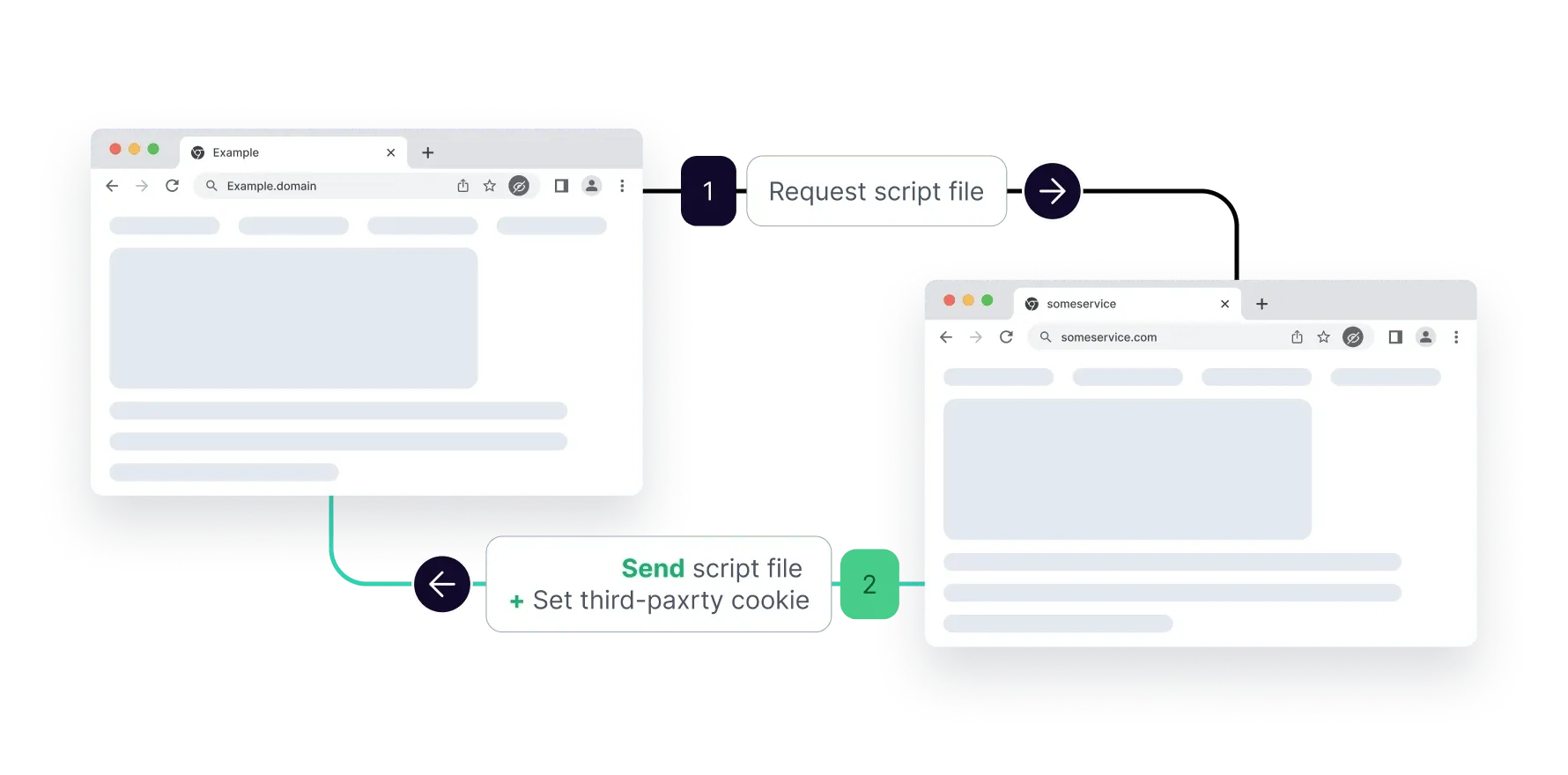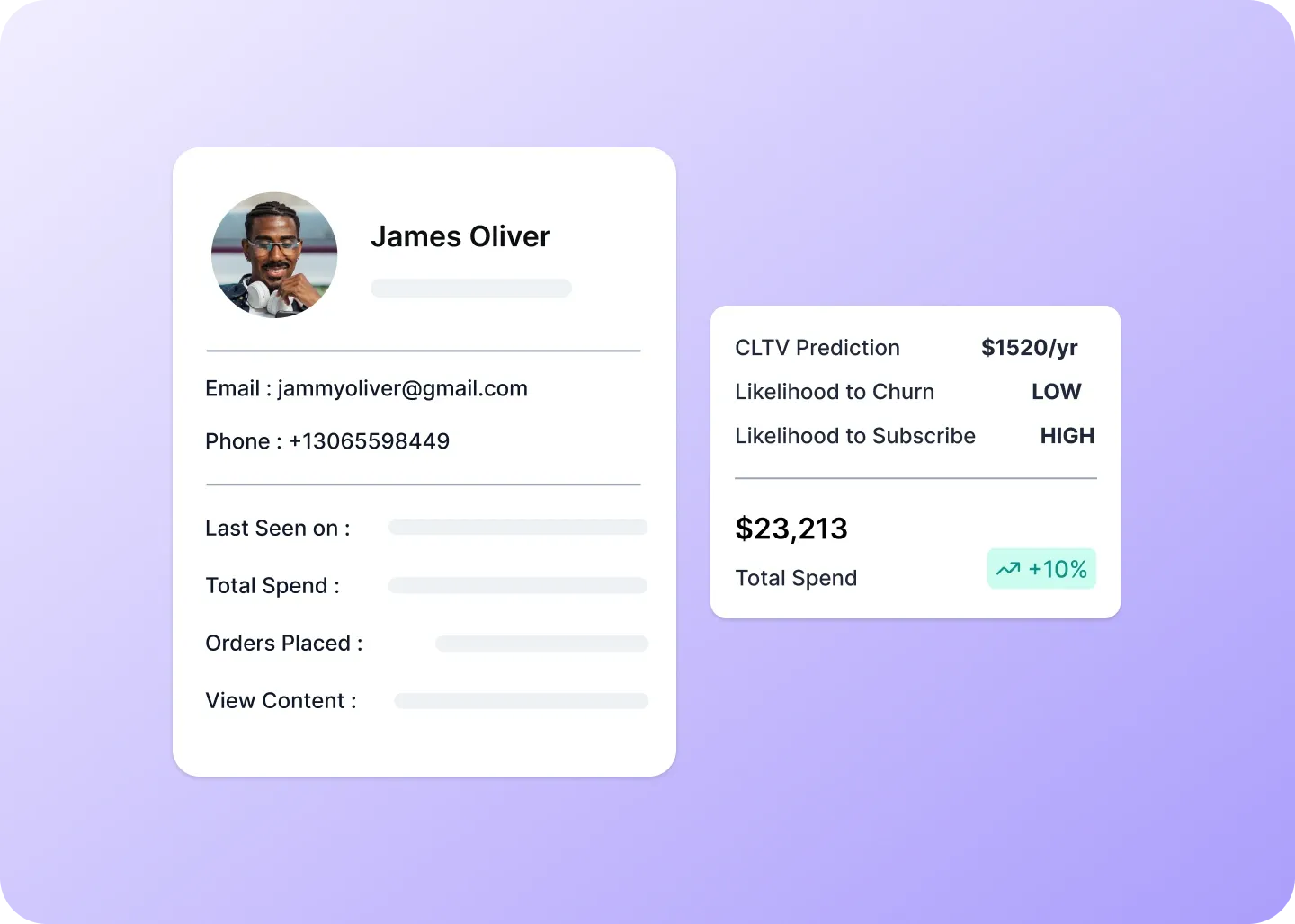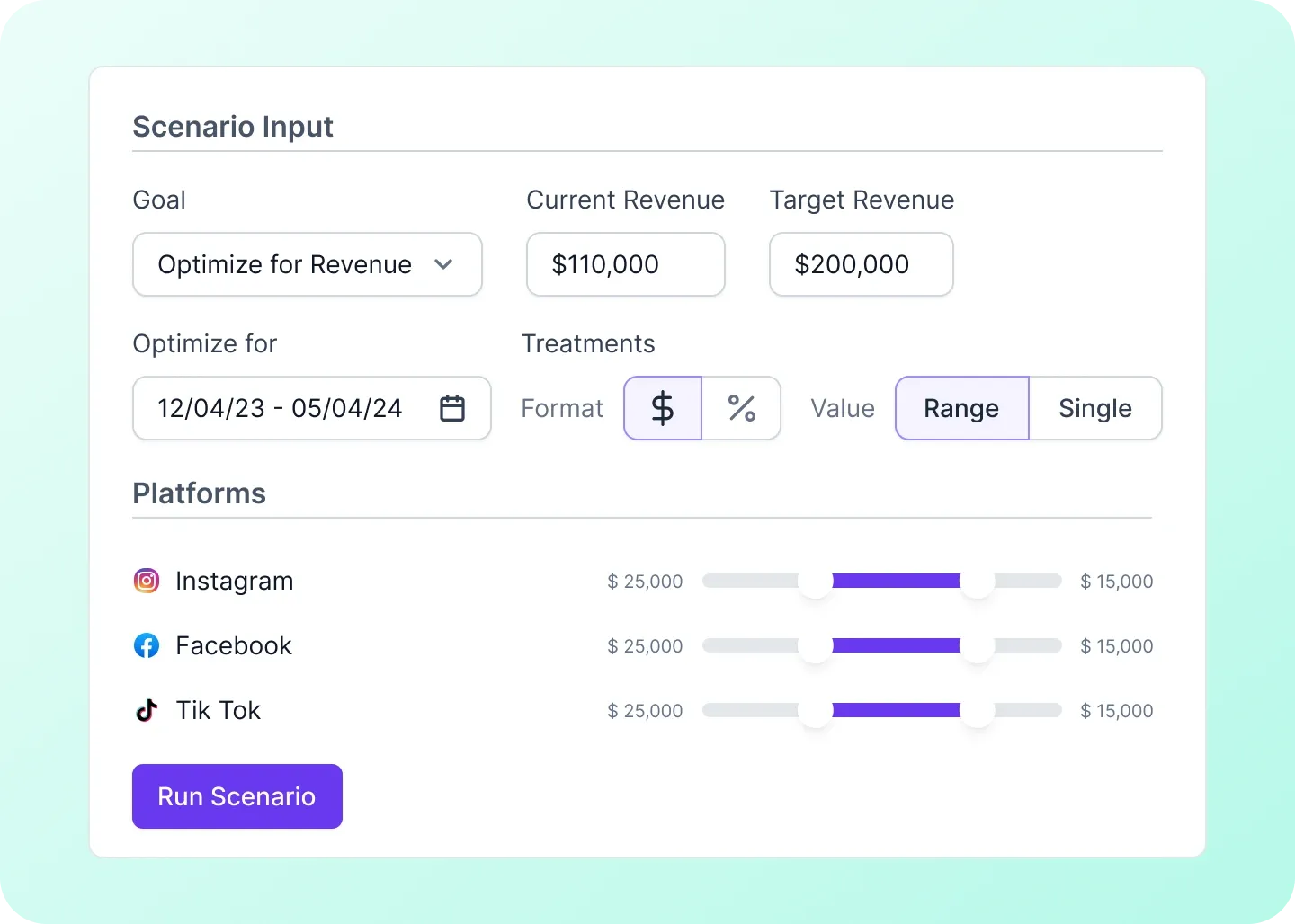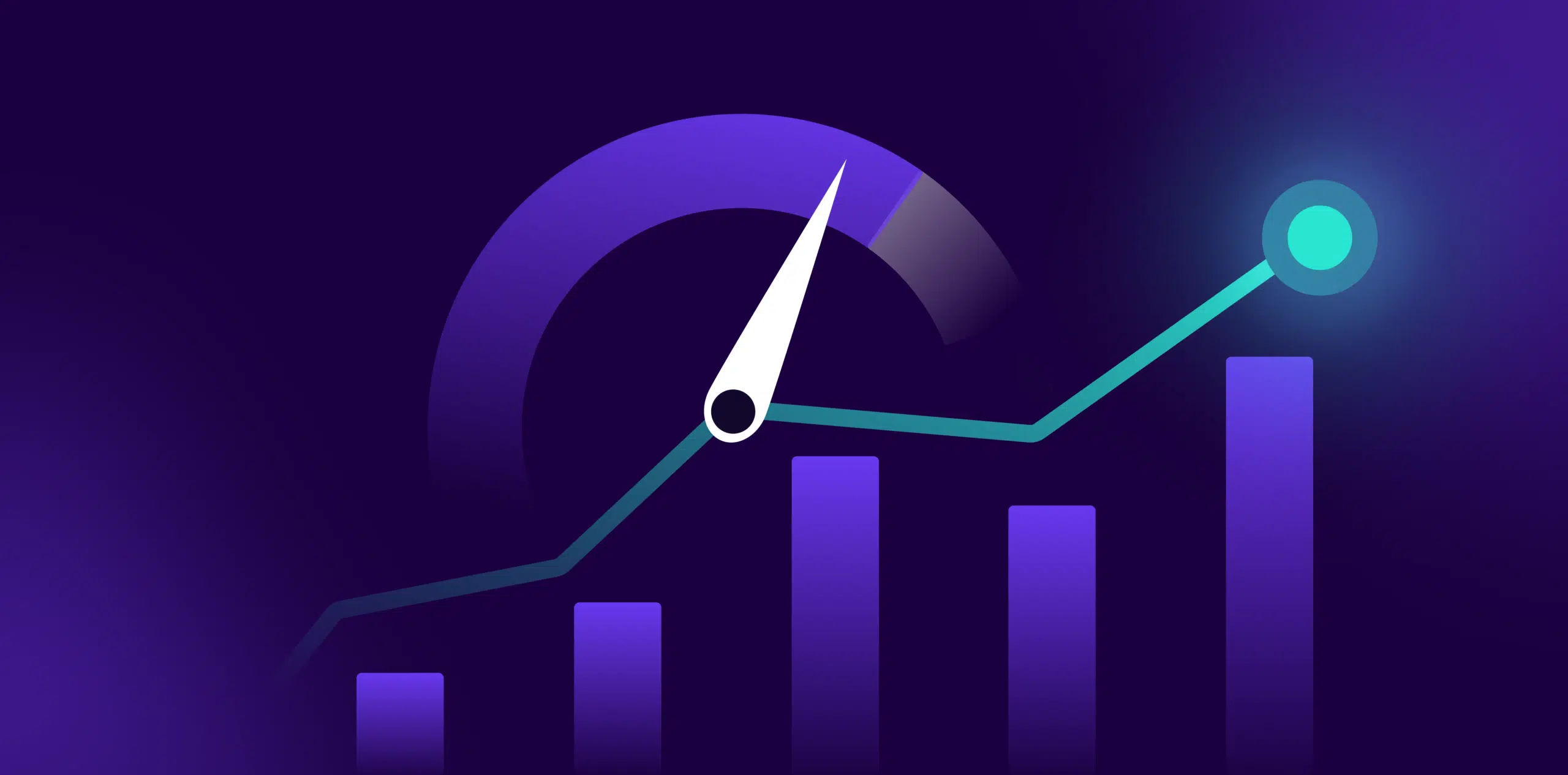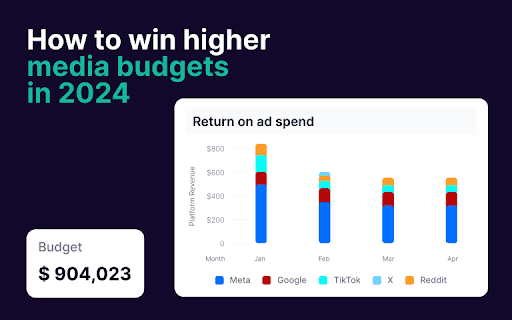On January 4th, 2024, the headline for every marketer was the beginning of the end for third-party cookies. Chrome announced that it would disable third-party cookies for 1% of users to facilitate testing, and then continue with their plan to completely phase them out by Q3 2024.
This was not the first time when marketers were told that third-party cookies were going away. In fact, the conversation around this has been happening since 2020. However, over the last 6 months, Google started showing conviction in its plans and the beginning of the phase-out showed their firm intention this time.
This impending demise heralds a paradigm shift, marking the end of an era and the dawn of a new age in digital tracking. So, what does this mean for brands and agencies? How can they fundamentally realign their interaction and understanding of their audiences?
This blog post explores this and gives an action plan for both brands and agencies to prepare for this transition and become a stronger entity.
Before we begin, let’s explore what led to the shift in digital tracking.
Why are Third-Party Cookies Going Away?
For years, third-party cookies have been the linchpins of online advertising, silently powering the engine of personalized marketing. These tiny pieces of code embedded in users’ browsers have enabled advertisers to track user behavior across different websites, creating detailed user profiles for targeted advertising. This method of tracking has been instrumental in delivering customized online experiences, from personalized product recommendations to ads that eerily echo our latest web searches.
How third party cookies function while browsing on other domains
However, this convenience and personalization have not come without cost.
The ubiquitous nature of third-party cookies raised substantial privacy concerns, shedding light on the invasive aspects of digital tracking. Users’ growing discomfort and the increasing scrutiny from privacy advocates and regulators catalyzed a reassessment of privacy norms in the digital domain.
Recognizing these concerns, tech giants like Google have initiated steps to phase out third-party cookies, a move that significantly impacts the digital advertising ecosystem. Google Tracking Protection, as part of its broader Privacy Sandbox initiative, exemplifies this shift towards prioritizing user privacy while still attempting to cater to the needs of advertisers and marketers. This transition to a cookie-less world is not merely a change in technology but a redefinition of the relationship between digital entities and user privacy.
In this new landscape, both brands and marketing agencies are compelled to reassess and recalibrate their strategies. The focus is now shifting toward methods like contextual advertising, enhanced reliance on first-party data, and leveraging emerging technologies like Lifesight’s Unified Marketing Measurement (UMM) tool that respect user privacy while still delivering value. Advertisers and marketers are at a crossroads, where adapting to these changes is not just an option but a necessity to remain relevant and compliant in a privacy-conscious world.
How the End of Third-Party Cookies Affect Current Advertising Models?
The phasing out of third-party cookies is set to reshape how brands and agencies engage with their audiences and measure the effectiveness of their campaigns. Let’s delve into the implications of this paradigm shift on current advertising models.
Disruption in targeted advertising
To appreciate the full impact, it’s essential to understand the role third-party cookies have played in digital advertising. The capability to follow users across the digital landscape and glean insights into their preferences and behaviors has been a driving force in the effectiveness of digital advertising.
With the disappearance of third-party cookies brands and agencies will lose the ability to track user behavior across various websites. This means a significant reduction in the ability to gather detailed insights into user preferences and habits, which has been crucial for targeted advertising.
The current model of precisely targeting audiences based on their online behavior will also undergo a drastic change. Advertisers will need to find new ways to identify and reach their target audiences without infringing on their privacy.
This will call for a move towards contextual advertising, where ads are placed based on the content of the website, and cohort-based approaches like Google’s FLoC, where users are grouped into cohorts based on similar browsing behaviors.
Changes in measurement and analytics
Another significant impact will be on the measurement and analytics of advertising campaigns. Third-party cookies have been instrumental in tracking user interactions with ads across the web, helping in attributing conversions and understanding the customer journey. The absence of this tracking ability will compel brands and agencies to adopt new methods for measuring the effectiveness of their ads.
Compliance and ethical advertising
This shift also aligns with a growing global emphasis on data privacy and user consent. Brands and agencies will need to navigate an evolving regulatory landscape, ensuring compliance with privacy laws like GDPR and CCPA. This move towards a more privacy-conscious approach in digital advertising is not just a technical necessity but also an ethical imperative.
Potential Challenges for Brands and Agencies in Adapting to a Cookie-Less World
Challenge 1: Rethinking audience targeting and data collection
One of the most significant challenges is the loss of the granular targeting that third-party cookies provide. Brands and agencies will no longer have the same level of access to detailed user behavior across the web, making it more challenging to target ads with precision.
Moreover, the emphasis will shift towards first-party data collection, but building this repository is time-consuming and requires robust engagement strategies. For many organizations, particularly smaller ones, this can be a daunting task.
Challenge 2: Developing new advertising strategies
Transitioning to new advertising methods like contextual advertising or cohort-based targeting requires investment in new technologies and platforms. This transition can be resource-intensive and requires a strategic shift.
Agencies especially will also face the need to train their teams in these new methodologies, which could entail a steep learning curve and the need for additional resources.
Challenge 3: Redefining measurement and attribution
The absence of third-party cookies impacts how brands and agencies measure the success of their campaigns. Traditional metrics like click-through rates and conversion tracking will need reevaluation, and new metrics aligned with the cookie-less environment will need to be developed.
Additionally, understanding the customer journey and attributing conversions will become more complex. Brands and agencies will need to develop new attribution models that don’t rely on individual user tracking across sites.
Challenge 4: Compliance and privacy concerns
Adhering to privacy regulations such as GDPR and CCPA becomes more challenging as the rules around data collection and user consent continue to evolve.
Achieving the right balance between personalizing the user experience and respecting user privacy will be a delicate task. Brands and agencies must ensure they don’t overstep privacy boundaries while trying to remain relevant to their audience.
Challenge 5: Maintaining consumer trust and engagement
In a world where privacy concerns are escalating, earning and maintaining consumer trust becomes paramount. Brands will need to be transparent about their data practices to build this trust.
Engaging users effectively without the personalization that cookies provide requires creative and innovative approaches. This might involve more content-driven strategies or leveraging emerging technologies like AI to understand user preferences in a privacy-compliant way.
Strategies for Brands
1) Embracing first-party data
In the impending cookie-less future, first-party data emerges as a linchpin for digital marketing strategies. Unlike third-party data, which is collected by external sources, first-party data is gathered directly from your audience. This data includes information from interactions with your website, apps, CRM, social media, and customer feedback. Its intrinsic value lies in its relevance and accuracy, representing a direct line to your audience’s preferences, behaviors, and needs.
If you are wondering how you can collect first-party data, here are some strategies:
- Website and app analytics
- CRM integration
- Customer surveys and feedback
- Social media engagement
- Email marketing interactions
- Loyalty programs
This is in no way an exhaustive list, but merely some of the popular methods used to collect first-party data. The repository built using such data can help you tailor your marketing messages and offers to meet the specific needs and preferences of your audience.
How Lifesight can help with first-party data activation
Lifesight specializes in turning first-party data into actionable insights. Our platform is designed to help brands seamlessly collect, analyze, and utilize their first-party data to drive marketing decisions.
Lifesight consolidates your disparate first-party data sources, providing a unified view of your customers. The tool then helps you apply advanced analytics to your first party, uncovering patterns and insights that can inform your marketing strategies. You can also segment your audience to create highly personalized marketing campaigns.
The customer profiles offered by Lifesight using first-party data
The best part however is that you can dive into your customer profiles to view present and future behaviors. The tools further can help you automatically predict customer behavior while identifying the next best actions to improve outcomes or surface opportunities to convert or retain customers.
2) Exploring new advertising avenues
With third-party cookies going out, two approaches have been gaining traction in the advertising world: contextual advertising and AI-driven targeting.
Contextual advertising, an approach that predates the digital era, is witnessing a resurgence as a valuable strategy in the post-cookie landscape. This method involves placing ads based on the webpage’s content rather than on the user’s past behavior. For instance, advertising sports equipment on a fitness blog or kitchen appliances on a cooking website.
Ads are matched with the content of the page, ensuring relevance to the reader’s current interest. This increases the likelihood of engagement since the ad aligns with the content being consumed. It does not rely on personal data or user tracking, making it compliant with privacy regulations and more acceptable to privacy-conscious consumers. Moreover, modern contextual advertising uses sophisticated algorithms to understand the nuances of page content, enabling more accurate ad placements.
On the other hand, AI-driven targeting involves leveraging artificial intelligence to analyze large sets of first-party data and derive insights for targeted advertising. The major benefits offered by this method are as follows:
- Predictive analytics: AI can predict user preferences and behaviors by analyzing past interactions with the brand. This helps in creating more effective and personalized ad campaigns.
- Automated segmentation: AI algorithms can automatically segment audiences based on various parameters, enabling more focused and efficient advertising efforts.
- Dynamic ad creation: AI can also aid in creating dynamic ads that are automatically tailored to the audience’s preferences, increasing the relevance and effectiveness of the ads.
- Real-time optimization: AI systems can continuously learn and optimize ad performance in real-time, adjusting strategies based on user engagement and other metrics.
3) Compliance and data privacy
With data privacy becoming paramount, adhering to regulations is not just a legal necessity but also a cornerstone of customer trust. For brands, this means two things:
A. Complying with current regulations
B. Being prepared for future changes in the legal landscape
Brands should thoroughly understand regulations like the General Data Protection Regulation (GDPR) in Europe and the California Consumer Privacy Act (CCPS). These laws provide frameworks for user data protection, including how data is collected, processed, and stored.
At the same time, implement clear consent mechanisms for collecting user data. This includes opt-in forms and cookie consent banners that are transparent and easy for users to understand and act upon. We also recommend you collect only the data that is necessary for the intended purpose and use it solely for that purpose. This principle of data minimization reduces the risk of data breaches and ensures compliance.
While these factors will help comply, you also need to ensure you are prepared for future regulatory changes. Here are some steps you can take in this regard:
- Stay informed: Regularly update your knowledge about potential changes in privacy laws across different regions, especially if you operate internationally.
- Flexible data strategies: Develop adaptable data strategies. This flexibility will make it easier to adjust to new regulations as they come into effect.
- Regular audits and compliance reviews: Conduct regular audits of data collection, storage, and processing practices to ensure ongoing compliance. This should include a review of third-party vendors and partners.
- Incorporate Privacy by Design: Adopt a ‘Privacy by Design’ approach in product development and business processes. And extend this system throughout the organization by conducting regular training for employees to ensure they are aware of the importance of data privacy.
Strategies for Agencies
1) Redefining targeting and measurement
The deprecation of third-party cookies means agencies can no longer depend on extensive cross-site tracking for audience targeting. Instead, the focus shifts to using first-party data, contextual cues, and aggregated data for targeting. This involves understanding user behavior through direct interactions and aligning advertising strategies with the context of content rather than individual user tracking.
Moreover, without third-party cookies, traditional metrics like click-through rates and conversion tracking become less reliable. Agencies need to explore new measurement techniques that focus on holistic views of campaign performance. And this is where Unified Marketing Measurement (UMM) platforms come into play.
Unified Marketing Measurement (UMM) is an approach that combines various measurement methodologies, like multi-touch attribution (MTA), marketing mix modeling (MMM), incrementality testing(IT), and causal AI into a single solution to provide a more comprehensive view of marketing performance. This approach allows for a holistic understanding of how different channels contribute to the overall marketing objectives and helps in optimizing marketing spending across channels.
In three steps, this is how you can understand UMM:
- Holistic view of marketing efforts: UMM provides a unified view of the effectiveness of all marketing channels, both online and offline, This helps in understanding the cumulative impact of marketing efforts.
- Experiments that drive incremental revenue: With all your data in one place, UMM offers you the capability to test your marketing efforts to understand what factors add incremental revenue to your business.
- Data-driven decision-making: By leveraging data from multiple sources, UMM enables agencies to make more informed decisions about where to allocate resources for maximum impact.
- Flexibility and adaptability: UMM is adaptable to changes in the marketing environment, making it particularly suitable for the evolving digital landscape.
How Lifesight Can Assist Agencies
Lifesight has been a pioneer when it comes to the idea of UMM. With universal attribution, MMM, incrementality testing, and causal AI all baked into one tool, it gives agencies supervision to accurately understand what works and what doesn’t.
Having the capability to become the single source of truth for all your marketing data, Lifesight gives you the levers to pull off marketing experiments that reveal the ground truth of your marketing effectiveness. With its extensive experimental tools like split testing, geo testing, and incrementality testing, you can always have the answer to ‘where you need to invest to get the maximum ROI.’
And in scenarios, where you cannot experiment with your data, Lifesight offers the power of causal AI to discover cause-and-effect relationships between factors of influence so that you can accurately estimate the effects of treatments on outcomes.
The scenario planning solution of Lifesight to optimize different goals
Baked with AI, the platform also helps you test different marketing scenarios to achieve a defined goal. This helps agencies build optimal media plans with accurate forecasting that is based on their marketing data.
2) Leveraging technology innovations
Ever since the news of third-party cookie deprecation broke out, marketers and ad platforms have been looking for ways to solve the conundrum using technology. With Google being at the forefront of this shift, it has also developed a solution in the form of its Privacy Sandbox.
The Privacy Sandbox initiative by Google aims to develop a set of privacy-preserving tools that provide personalized experiences without individual tracking. Within the Privacy Sandbox, three components can effectively help agencies tackle the shift.
- Federated Learning of Cohorts (FLoC): FLoC is a key component of the Privacy Sandbox. It groups users into cohorts based on similar browsing behaviors. This allows for targeted advertising without compromising individual privacy.
- TURTLEDOVE: TURTLEDOVE (Two Uncorrelated Requests, Then Locally-Executed Decision On Victory) is a proposal within the Privacy Sandbox aimed at enabling remarketing to users in a privacy-compliant manner.
- Aggregated Reporting: This feature is designed to provide insights into ad performance while preserving user anonymity, ensuring agencies can measure campaign effectiveness without individual user data.
3) Educational initiatives to support clients
Agencies have a pivotal role in guiding their clients through the complexities of transitioning away from third-party cookies. This involves not just adapting strategies but also educating clients about these significant changes.
As a first step, agencies can organize workshops and training sessions for their clients to explain the implications of the death of third-party cookies. These sessions can cover topics like the basics of first-party data, understanding new technologies like Google’s Privacy Sandbox, and exploring alternative advertising strategies. Additionally, they can also create tailored training programs for different levels of client organizations – from executives to the marketing team – ensure that everyone understands the strategic shifts in digital advertising.
Secondly, they can offer personalized consultations to clients to help address specific concerns and strategies related to their unique business models and marketing goals. They can also assist clients in strategic planning, helping them integrate new technologies and methodologies into their existing marketing strategies.
Finally, with brands being new to this, agencies can act as a trusted partner by providing resources and ongoing support. Creating and distributing resource materials such as whitepapers, guides, and case studies on the post-cookie advertising landscape can be invaluable for clients. Agencies can also provide ongoing support and updates to their clients about the latest trends, technologies, and regulatory changes.
How Collaboration between Brands and Agencies Can Ease the Transition?
The transition away from third-party cookies presents a unique opportunity for brands and agencies to forge stronger collaborations. In this new terrain, the symbiotic relationship between the two is more critical than ever. Brands possess valuable first-party data and an in-depth understanding of their customers, while agencies bring expertise in navigating the latest digital marketing technologies and strategies. By working closely together, they can unlock innovative ways to use this data, ensuring marketing campaigns are both effective and privacy-compliant.
Agencies can act as strategic advisors, helping brands understand the nuances of the post-cookie world. This involves not just sharing insights about new technologies and regulatory changes but also helping brands to leverage their first-party data more effectively. In turn, brands can provide agencies with deeper insights into their customer base, enabling the creation of tailored strategies that resonate more authentically with their audiences. This collaborative approach ensures that both parties are not just reacting to changes but are proactively shaping their digital marketing strategies to thrive in a cookie-less future.
Conclusion
As we stand at the cusp of a significant shift in digital marketing, adaptability and forward-thinking become the cornerstone for success. The end of third-party cookies is not just a challenge; it represents a pivotal moment for the industry to embrace a more privacy-centric approach while still engaging effectively with audiences. Brands and agencies alike must be willing to adapt, exploring new avenues of data collection, targeting, and measurement that align with the evolving digital landscape.
For those ready to take this step, solutions like Lifesight offer the tools and expertise needed to navigate this new era. Lifesight specializes in leveraging first-party data, advanced analytics, and privacy-compliant technologies, positioning brands and agencies to thrive in a post-cookie world. By partnering with a solution like Lifesight, you can ensure that your strategies are not only compliant but also ahead of the curve, setting a benchmark for success in the digital marketing landscape of tomorrow.
To help marketers adapt to this new cookieless and privacy-focused world, we have created a set of checklists that will give you an action plan and the tricks to experiment for success. Find them below:
- Checklist for brands to grow in a third-party cookie-less future
- Checklist for agencies mastering the third-party cookie-less future
- Incrementality Testing – A Methodical Implementation Checklist
You can see Lifesight in action and understand how it can help you successfully transition to a cookieless world by setting up a demo.
You may also like
Essential resources for your success

